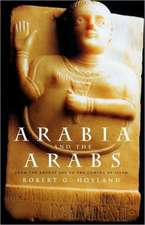China: How the Empire Fell: Asia's Transformations
Editat de Joseph Esherick, C. X. George Weien Limba Engleză Paperback – 4 aug 2015
On the centenary of the 1911 Revolution, Chinese scholars debated the causes and significance of the empire’s collapse, and this book presents twelve of the most important contributions. Rather than focusing on Sun Yat-sen’s relatively weak and divided revolutionary movement, as much previous scholarship has, these studies examine the internal dynamics of political and socio-economic change in China. The chapters reveal how reforms in education, army organization, and constitutional rule created new social forces and political movements that undermined dynastic legitimacy within China and on its frontiers. Through detailed analyses, using new archival, memoir, diary, and newspaper sources, the authors cast new light on the sudden collapse of an empire that many thought was at last embarked on a road to reform and national rejuvenation.
China: How the Empire Fell will be of huge interest to students and scholars of modern Chinese history as well as those of contemporary China.
| Toate formatele și edițiile | Preț | Express |
|---|---|---|
| Paperback (1) | 416.44 lei 6-8 săpt. | |
| Taylor & Francis – 4 aug 2015 | 416.44 lei 6-8 săpt. | |
| Hardback (1) | 1061.93 lei 6-8 săpt. | |
| Taylor & Francis – 3 dec 2013 | 1061.93 lei 6-8 săpt. |
Din seria Asia's Transformations
-
 Preț: 282.38 lei
Preț: 282.38 lei -
 Preț: 267.92 lei
Preț: 267.92 lei -
 Preț: 341.33 lei
Preț: 341.33 lei - 18%
 Preț: 1220.46 lei
Preț: 1220.46 lei -
 Preț: 447.51 lei
Preț: 447.51 lei - 18%
 Preț: 1060.87 lei
Preț: 1060.87 lei -
 Preț: 489.44 lei
Preț: 489.44 lei -
 Preț: 446.58 lei
Preț: 446.58 lei - 18%
 Preț: 1003.43 lei
Preț: 1003.43 lei -
 Preț: 488.29 lei
Preț: 488.29 lei -
 Preț: 449.41 lei
Preț: 449.41 lei - 28%
 Preț: 822.54 lei
Preț: 822.54 lei - 18%
 Preț: 1225.22 lei
Preț: 1225.22 lei - 18%
 Preț: 1389.36 lei
Preț: 1389.36 lei - 18%
 Preț: 1062.98 lei
Preț: 1062.98 lei -
 Preț: 483.49 lei
Preț: 483.49 lei -
 Preț: 452.31 lei
Preț: 452.31 lei -
 Preț: 416.22 lei
Preț: 416.22 lei -
 Preț: 438.14 lei
Preț: 438.14 lei -
 Preț: 411.42 lei
Preț: 411.42 lei -
 Preț: 443.65 lei
Preț: 443.65 lei - 18%
 Preț: 1055.51 lei
Preț: 1055.51 lei - 18%
 Preț: 1054.27 lei
Preț: 1054.27 lei -
 Preț: 445.38 lei
Preț: 445.38 lei - 25%
 Preț: 573.10 lei
Preț: 573.10 lei - 28%
 Preț: 821.46 lei
Preț: 821.46 lei - 18%
 Preț: 1337.43 lei
Preț: 1337.43 lei - 18%
 Preț: 1055.51 lei
Preț: 1055.51 lei - 18%
 Preț: 1059.45 lei
Preț: 1059.45 lei - 15%
 Preț: 547.89 lei
Preț: 547.89 lei -
 Preț: 450.15 lei
Preț: 450.15 lei -
 Preț: 489.26 lei
Preț: 489.26 lei - 18%
 Preț: 1110.77 lei
Preț: 1110.77 lei -
 Preț: 411.42 lei
Preț: 411.42 lei -
 Preț: 453.96 lei
Preț: 453.96 lei - 24%
 Preț: 337.22 lei
Preț: 337.22 lei - 26%
 Preț: 186.91 lei
Preț: 186.91 lei
Preț: 416.44 lei
Nou
Puncte Express: 625
Preț estimativ în valută:
79.68€ • 83.20$ • 65.80£
79.68€ • 83.20$ • 65.80£
Carte tipărită la comandă
Livrare economică 15-29 aprilie
Preluare comenzi: 021 569.72.76
Specificații
ISBN-13: 9781138120761
ISBN-10: 1138120766
Pagini: 302
Ilustrații: 1 black & white illustrations, 1 black & white line drawings
Dimensiuni: 156 x 234 x 18 mm
Greutate: 0.46 kg
Ediția:1
Editura: Taylor & Francis
Colecția Routledge
Seria Asia's Transformations
Locul publicării:Oxford, United Kingdom
ISBN-10: 1138120766
Pagini: 302
Ilustrații: 1 black & white illustrations, 1 black & white line drawings
Dimensiuni: 156 x 234 x 18 mm
Greutate: 0.46 kg
Ediția:1
Editura: Taylor & Francis
Colecția Routledge
Seria Asia's Transformations
Locul publicării:Oxford, United Kingdom
Public țintă
Postgraduate and UndergraduateCuprins
Introduction Part I: The Challenges of Reform 1. The Reform Predicament 2. Late Qing Governors and Provincial Assemblies 3. Conflict and Competition: A New Perspective on Late Qing Politics Part II: The Sichuan Railway Crisis: Prelude to Revolution 4. Zaifeng and Qing Railway Policy Part III: Hubei Reforms and the Wuchang Uprising 5. The Policies in Hubei 6. Tang Hualong in the 1911 Revolution Part IV: Qing Officials and the Revolution 7. Provincial Officials in 1911 8. On the Mentality of Manchu and Mongol Elites During the 1911 Revolution Part V: Yuan Shikai 9. Zaifeng's Dismissal of Yuan Shikai and Sino-US-Japanese Diplomacy 10. The Qing’s Three Armies after the Wuchang Uprising 11. Yuan Shikai and the February 1912 ‘Beijing Mutiny’ Part VI: The Revolution and the Frontier 12. The ‘Political Game’ and ‘State-Building:’ Outer Mongolia during the 1911 Revolution
Notă biografică
Joseph W. Esherick is Emeritus professor of History, University of California, San Diego, USA.
C. X. George Wei is Professor and Head of the Department of History at the University of Macau.
C. X. George Wei is Professor and Head of the Department of History at the University of Macau.
Recenzii
"Although hints about current political debates are intriguing, the volume will be useful above all to graduate students and professors of modem Chinese history seeking an introduction to current Chinese scholarship on the Revolution of 1911. Summing Up: Highly Recommended" – K.E Stapleton, State University of New York in CHOICE
Descriere
The 1911 Revolution ended two millennia of imperial rule and established the Republic of China, but dissatisfaction with the early republic fuelled further revolutionary movements, each intended to be more thoroughgoing than the last. This book examines the internal dynamics of political and socio-economic change in China, and reveals how reforms in education, army organization, and constitutional rule created new social forces and political movements that undermined dynastic legitimacy within China and on its frontiers. Through detailed analyses, using new archival, memoir, diary, and newspaper sources, the authors cast new light on the sudden collapse of an empire.

















